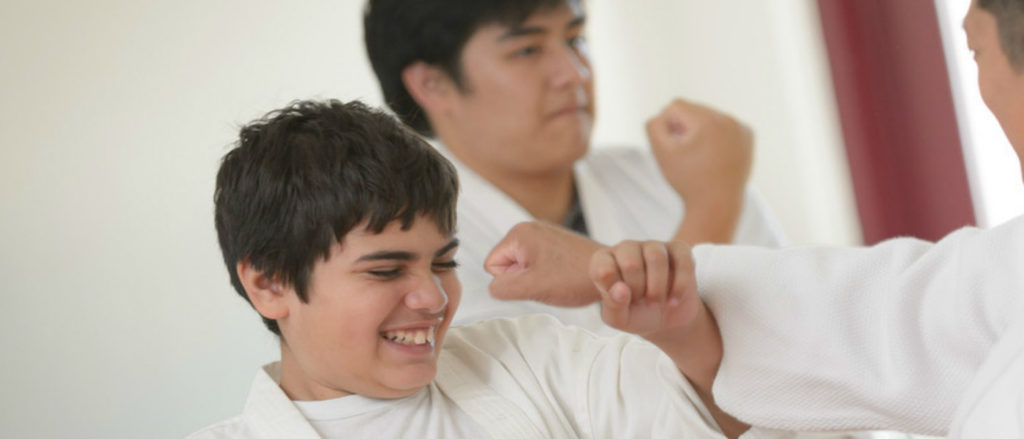I joined E-Karate in the winter of 2011 because of a TV show. I had recently been sucked into the mainstream, action-packed sci-fi/fantasy-ish anime, Dragon Ball Z Kai, and my simple-minded 12-year-old self suddenly felt compelled to do martial arts. I wanted to be a Super Saiyan (an advanced physiological alteration that constitutes supernatural powers, including but not limited to levitation, tremendous strength, uncanny agility, the ability to shoot energy out of one’s palms and, of course, newly upright, blond hair). The thought of helping out kids, both with and without special needs, was far from my mind.
E-Karate’s order of belt color is as follows, from lowest to highest ranking: white, striped white, green, striped green, blue, striped blue, brown, striped brown, black. I attained striped green by the end of the first year. It wasn’t until after I received this promotion that the head coaches began to train me to lead parts of the class. Leading didn’t come naturally though, at first. My sole goal from the start had been to reach black belt, and other people at E-Karate weren’t really part of the equation.
The turning point happened after I got my blue belt. About 10 people who had previously been going to E-Karate, all green or blue belt (and mostly typical), stopped attending sessions. Each had his or her own reasons for quitting, but the result was that the class was left with less people and mostly beginners. After a month, some new people started coming out, and the head coaches entirely shifted the focus of E-Karate. Previously, we were practicing more advanced techniques. Now, we all had to go back to the beginning and review the same old basics. Now I was needed to help coach—I had reached a roadblock on my path to black belt. I realized that the class was exactly what I’d heard E-Sports programs were: inclusive. It wasn’t about climbing to the top in my personal karate career. We all had to stick together, go at the same pace, even if some of us were ahead of others.
I’ve become passionate about seeing these kids grow. It’s incredible to watch a boy with autism go from barely wanting to participate in any drill to always asking if he can lead everyone in the next one—and I must say, he is a spectacular leader. It’s incredible to watch a boy with special needs go from avoiding my every approach to consistently initiating conversations with me about yesterday’s basketball game or the new video game that going to be released soon. It’s incredible to watch a typical girl and a special needs girl do partner stretches together, run around the room, laugh and perform kata side-by-side, perfectly self-controlled. It’s truly incredible. (Read: Why Martial Arts are Good for the Special Needs Children?)
Looking back now on these past four-and-a-half years, I notice that E-Karate changed me; it continues to change me. I haven’t yet learned how to become a Super Saiyan or gotten my black belt, but I have discovered that there is a whole world beyond myself—that there are such things as empathizing, having compassion, leading by serving and genuinely caring for others. I have in no way come close to half-mastering self-sacrifice, but the admirable kids of E-Karate have taught me so much (I don’t feel as much of a coach as a student). Seeing the program better their lives and put smiles on their parents’ faces emboldens me to connect with them every week, to meet them where they’re at and to think outside of myself, because people like them are extraordinary.


